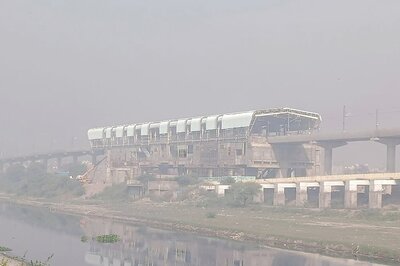
views
Over 118 countries agreed to triple installed global renewable energy (RE) capacity to at least 11,000 GW by 2030 at the UN Climate Summit. However, India did not sign the global pledge even though it has signalled its support for clean energy at the G20 Summit held in New Delhi.
“It is a missed opportunity for India despite taking leadership position on tripling of renewable energy at G20. The reason for not signing the pledge is to do with some language on coal phase out, which it wasn’t comfortable with. India with its growing development and energy demand needs, is not ready to commit to coal phase-down as of now,” says Vibhuti Garg, Director, South Asia at the Institute for Energy Economics and Financial Analysis. “But with or without signing the pledge, India’s 2030 energy targets imply tripling of renewable energy. So, all the effort now is for India to access technology and capital commitment from the Global North to Global South.”
The signatories led by the US, the UAE and the EU have also committed to doubling the annual global average rate of energy efficiency improvements from 2% to more than 4% every year until 2030. Both the goals were adopted in the New Delhi Declaration in September where India and China, which did not back the pledge on Saturday, had also agreed to make efforts towards tripling RE capacity.
However, it is learnt that the COP28 pledge also included the language on the phase-down of unabated coal power as well as an end to new coal-fired power plants — which does not align with developing countries dependent on coal to provide energy access to the billion-plus population.
In the run-up to COP28, power minister RK Singh had reiterated that the goal is “aspirational” and dependent on each country’s national circumstances. “Different member countries have different national circumstances. So, every country is carrying out energy transition accordingly,” said Singh during the Sixth Assembly of the International Solar Alliance (ISA).
IS COAL THE QUESTION?
“There is an oblique sense that the tripling of RE must necessarily go together with phasing out of coal. India has defended its stance on coal especially as it has come to this COP where other large emitters like the US are still holding on to their gas expansion plans and EU despite the good looks on climate finance is still keeping room for gas,” says Aarti Khosla, Director, Climate Trends.
With its 1.3 billion population, India relies heavily on coal to meet 55% of its energy needs. It had earlier also proposed to expand the language on “phase down of coal to include oil and gas”. The government has maintained that 80% of total historical carbon dioxide emissions was contributed by the developed countries and they must lead in cutting down emissions from gas and oil first. In 2022, coal accounted for about 19.5% of the US electricity generation.
NEED FOR CRITICAL MINERALS, FINANCE
As part of its Nationally Determined Contributions (NDCs), India has already committed to achieving 50% of its cumulative electric power installed capacity from non-fossil fuel-based energy resources by 2030. The country’s total non-fossil fuel capacity stands at 186 GW, and about 99 GW is under construction. “Renewables are key to addressing the climate crisis, however, it also demands availability of critical minerals and other elements which must be affordable, accessible and available,” says Manjeev Puri, Former Permanent India Representative to the UN.
Experts also point out that India has so far been managing its renewable energy growth story on its own but with the tripling of RE capacity, it will require additional funding support. “If the world wants the developing countries to transition, they would need more funding support through blended finance mechanisms from MDBs, green bonds, more transfers from equity investors and insurance and pension funds,” says Vibhuti Garg, Director, South Asia with the Institute for Energy Economics and Financial Analysis.
According to Ulka Kelkar, Executive Director, Climate, WRI India, India’s 2030 climate targets are of such magnitude that “the country will need to build as much renewable capacity as currently exists on the entire continent of South America”.
The COP28 Presidency led by the oil and gas-rich UAE exhorted all parties to sign the global pledge as soon as possible to deliver the clean energy push for climate action. Earlier in the day, COP28 President Sultan Al Jaber also published a summary of the series of High-Level Dialogues he co-chaired with Fatih Birol, Executive Director of the International Energy Agency (IEA). The summary outlined the need to “phasedown demand and supply of fossil fuel this decade to keep 1.5°C within reach”.


















Comments
0 comment